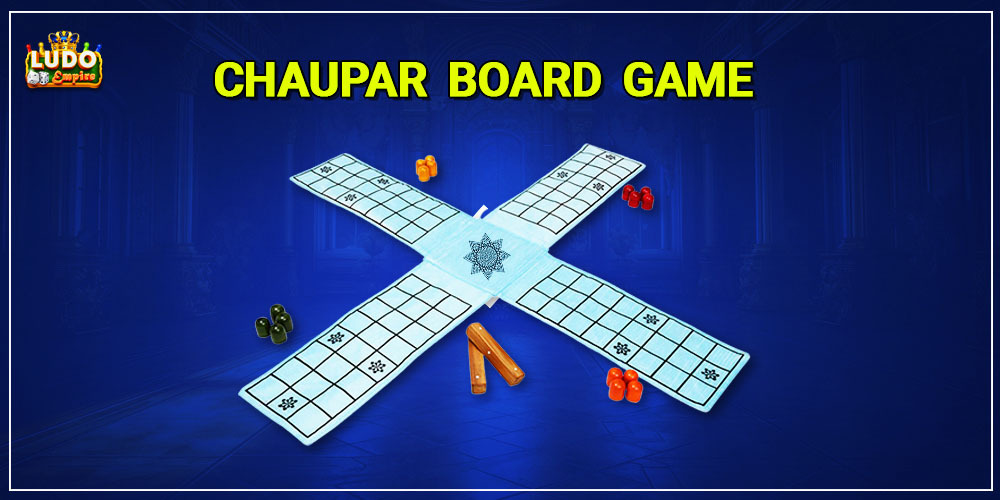From old age to young age, the craze for chaupar board game remains the same. Board games have been an integral part of human culture for centuries, offering entertainment, strategic challenges, and social interaction.
One such game that has stood the test of time is Chaupar, an ancient Indian board game with roots that trace back over a millennium. Also known as the Pachisi game, this classic game has evolved over the years, adapting to different cultures and technological advancements.
In this blog, we’ll explore the modern variations of the Chaupar game, shedding light on how this timeless game has transformed and adapted in our contemporary world, including its digital adaptations, educational applications, artistic influences, and competitive tournaments. Additionally, we’ll also delve into the world of Ludo, a contemporary board game that has gained immense popularity, bringing people together in the digital age. The Chaupar game continues to captivate players across generations, bridging the gap between tradition and modernity.
Historical Roots of Chaupar
The Chaupar board game, also known as Pachisi, originates in ancient India and is believed to have been played as early as the 6th century. The game involves the movement of pieces on a cross-shaped board. Its historical significance is immense, even being mentioned in ancient texts and epics like the Mahabharata. Today, the Chaupar game continues to enchant players with its blend of strategy and skills.
Traditional Chaupar: A Dance of Strategy and Chausar Dice
Traditional Chaupar is played on a cross-shaped board, often beautifully crafted with intricate designs. The game involves the use of six or seven pieces per player, moved according to the throw of Chaupar dice, intending to move all pieces to the center of the board. The game requires both strategy and luck, making it a captivating pastime for players of all ages. Chausar dice play a crucial role in determining the movement of the pieces and adding an element of chance to the game.
The Modern Allure of Ludo
In the contemporary gaming landscape, the Ludo game has emerged as a beloved board game, capturing the attention of players worldwide. Ludo, with its simple yet engaging gameplay, involves moving tokens around a square board based on the roll of a single dice. The game has found a new life in the digital era, with numerous online platforms and mobile applications offering multiplayer Ludo game experiences like Ludo Empire, a real-money online skill-based Ludo game. Just like Chaupar, Ludo brings friends and families together, fostering moments of joy and friendly competition.
Educational Chaupar and Ludo
Beyond mere entertainment, both Chaupar and Ludo games have found their place in the educational sector. Many schools and educational institutions use modified versions of these games to teach mathematical concepts, strategic thinking, and teamwork. By incorporating Chaupar and Ludo games into the curriculum, educators can make learning more engaging and interactive for students, fostering a deeper understanding of various subjects.

Chaupar and Ludo in the Art and Culture
Chaupar’s influence extends beyond the gaming arena, and the Ludo game, with its widespread popularity, has also made its mark in art and culture. These games have become muses for artists and filmmakers, inspiring various forms of creative expression. Paintings, sculptures, and even movies have depicted the essence of the Chaupar and Ludo games, capturing their cultural significance and timeless appeal. This integration of the games into art and culture ensures that their legacy lives on, captivating the imagination of generations to come.
Customized Chaupar and Ludo Sets : Where Craftsmanship Meets Tradition
In the modern era, the Chaupar game and Ludo sets have transformed in terms of design and materials. Artisans and craftsmen create customized sets, incorporating unique themes, materials, and designs.
These sets, beyond being a medium for gameplay, serve as exquisite decorative pieces, showcasing the rich cultural heritage associated with the Chaupar game and the contemporary allure of Ludo. From traditional wooden sets to modern marvels in marble and metal, the diversity of materials used highlights the adaptability of the games in the modern world.
Chaupar and Ludo Tournaments
Just like traditional sports, Chaupar game rules and Ludo have found their way into the competitive arena. Chaupar competitions and Ludo tournaments are organized at local, national, and international levels, attracting enthusiasts and professionals alike. These events not only promote the games but also create a sense of community among players, fostering friendships and camaraderie. The competitive aspect of Chaupar game rules and Ludo tips adds a new dimension to the games, encouraging players to hone their skills and strategies.
Conclusion
Chausar and Ludo, with their rich histories and adaptability, continue to captivate the hearts of enthusiasts worldwide. From traditional wooden boards to digital adaptations and competitive tournaments, these games have seamlessly transitioned into the modern era, proving that their charm is timeless.
As we embrace the diverse variations of Chaupar and Ludo, we not only celebrate historical pastimes but also ensure that these ancient and modern games remain cherished parts of our cultural heritage for generations to come.
Additionally, by downloading and playing Ludo Empire, individuals can not only win real money with their Ludo gaming but also enhance their skills, adding a competitive edge to the timeless appeal of these classic Ludo games.
FAQs
1. What is the history of Chaupar, and how has it evolved?
Chaupar, also known as Pachisi, has ancient origins dating back to the 6th century in India, mentions of the game can be found in the Indian epic, Mahabharata. Over time, the game has adapted and evolved into different variants.
2. How are Chaupar and Ludo used in education, and what benefits do they offer in terms of learning?
Both Chaupar and Ludo have been incorporated into educational settings to teach subjects like mathematics, strategic thinking, and teamwork.
3. Are there competitive events and tournaments for Chaupar and Ludo?
Yes, there are tournaments and competitions held at local, national, and international levels for Chaupar and Ludo.

